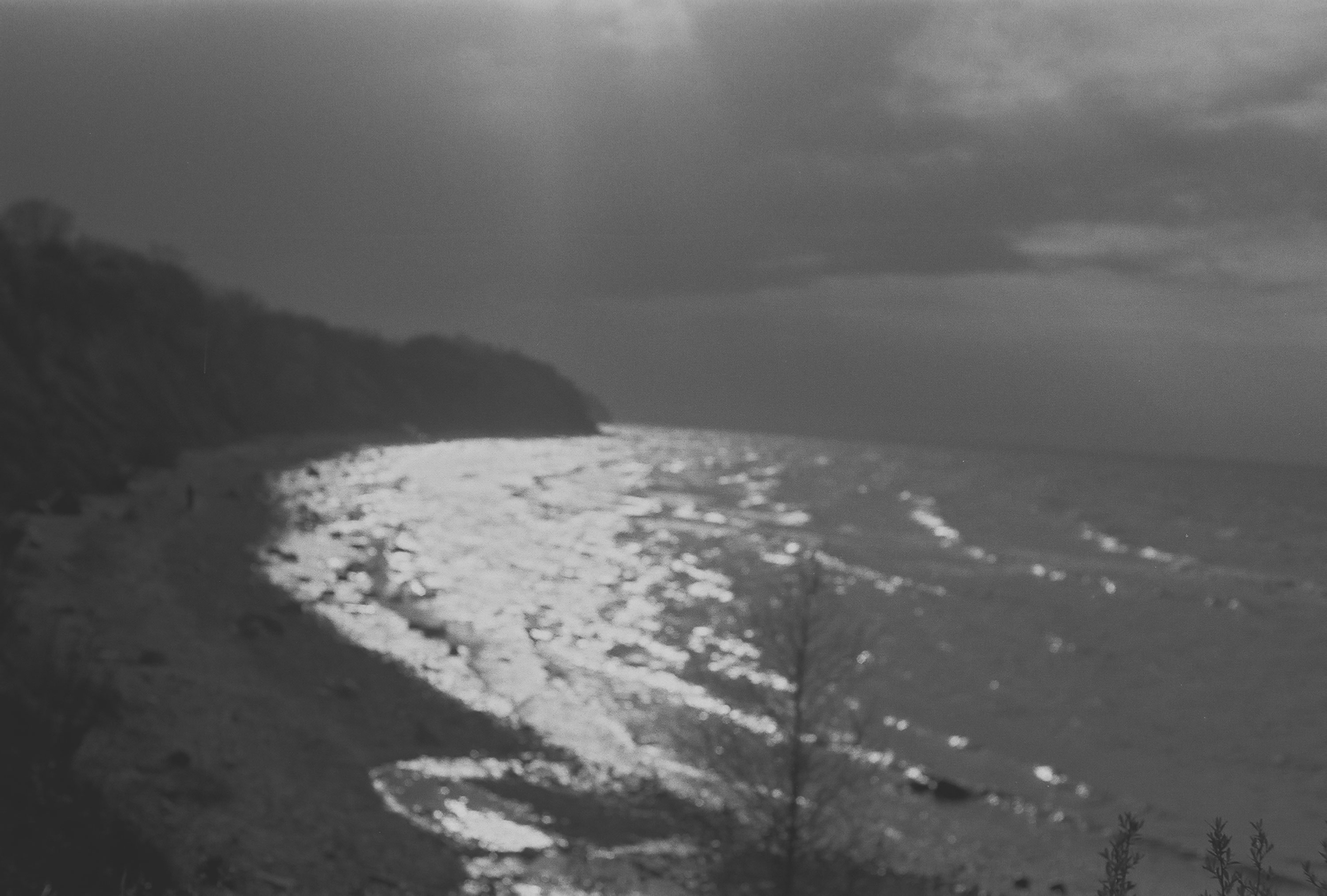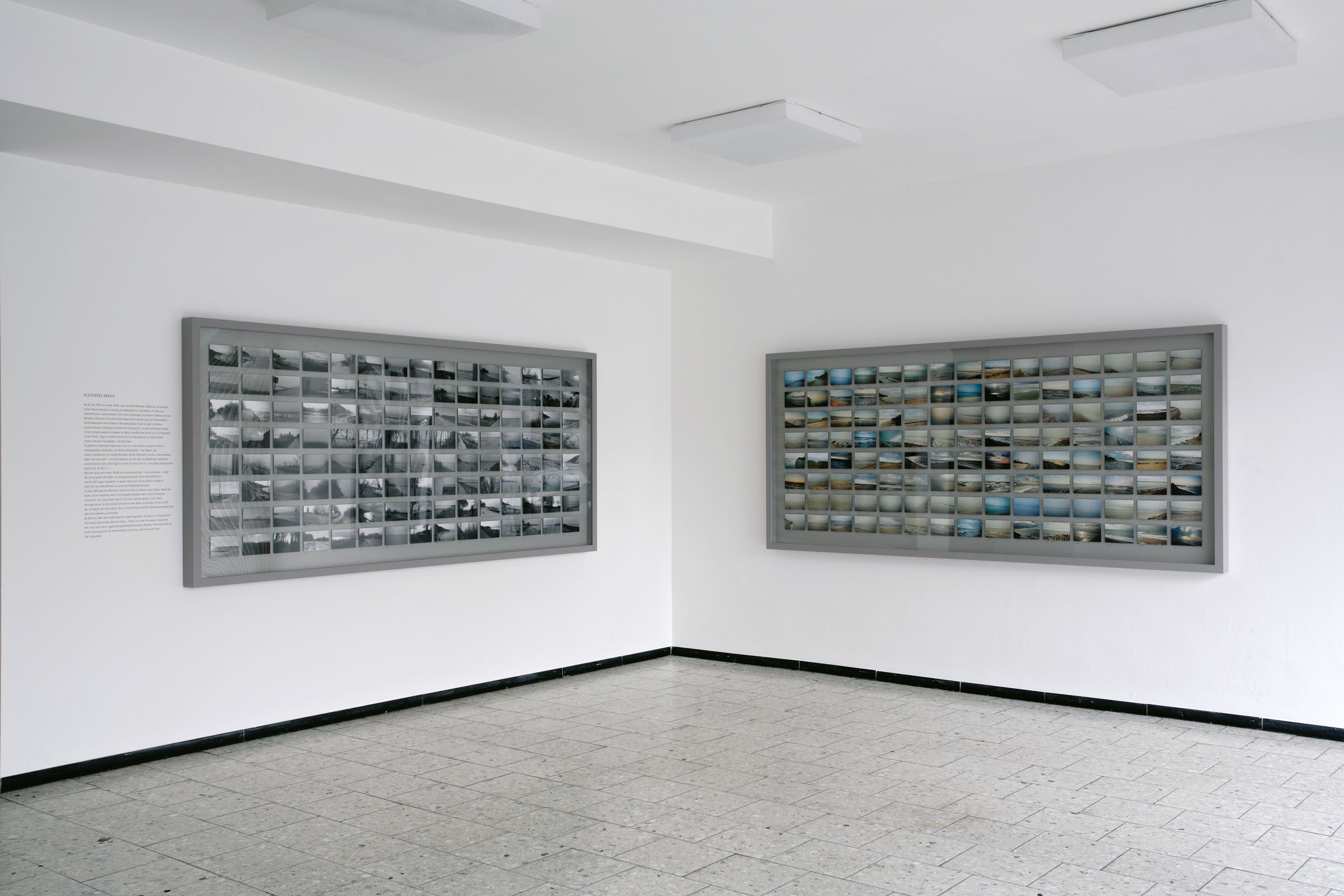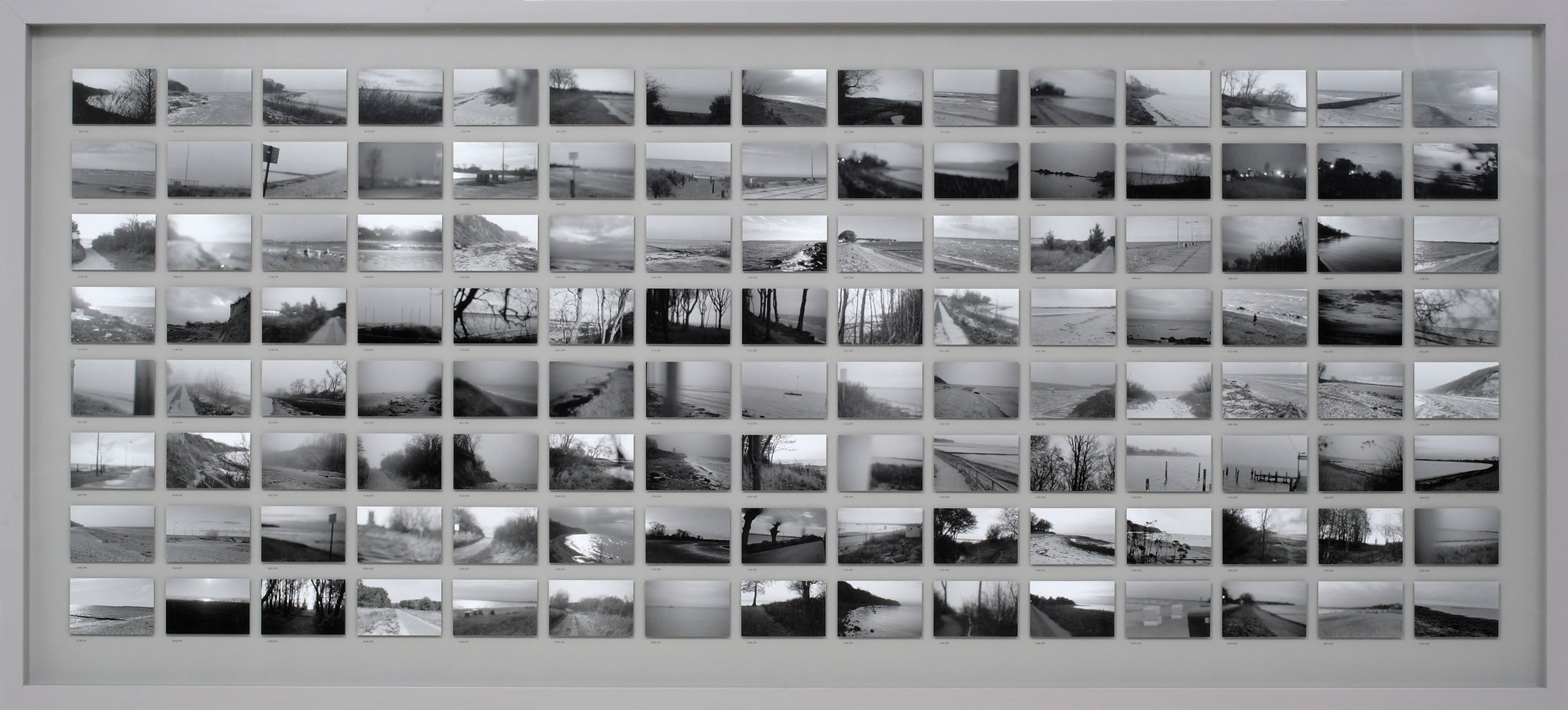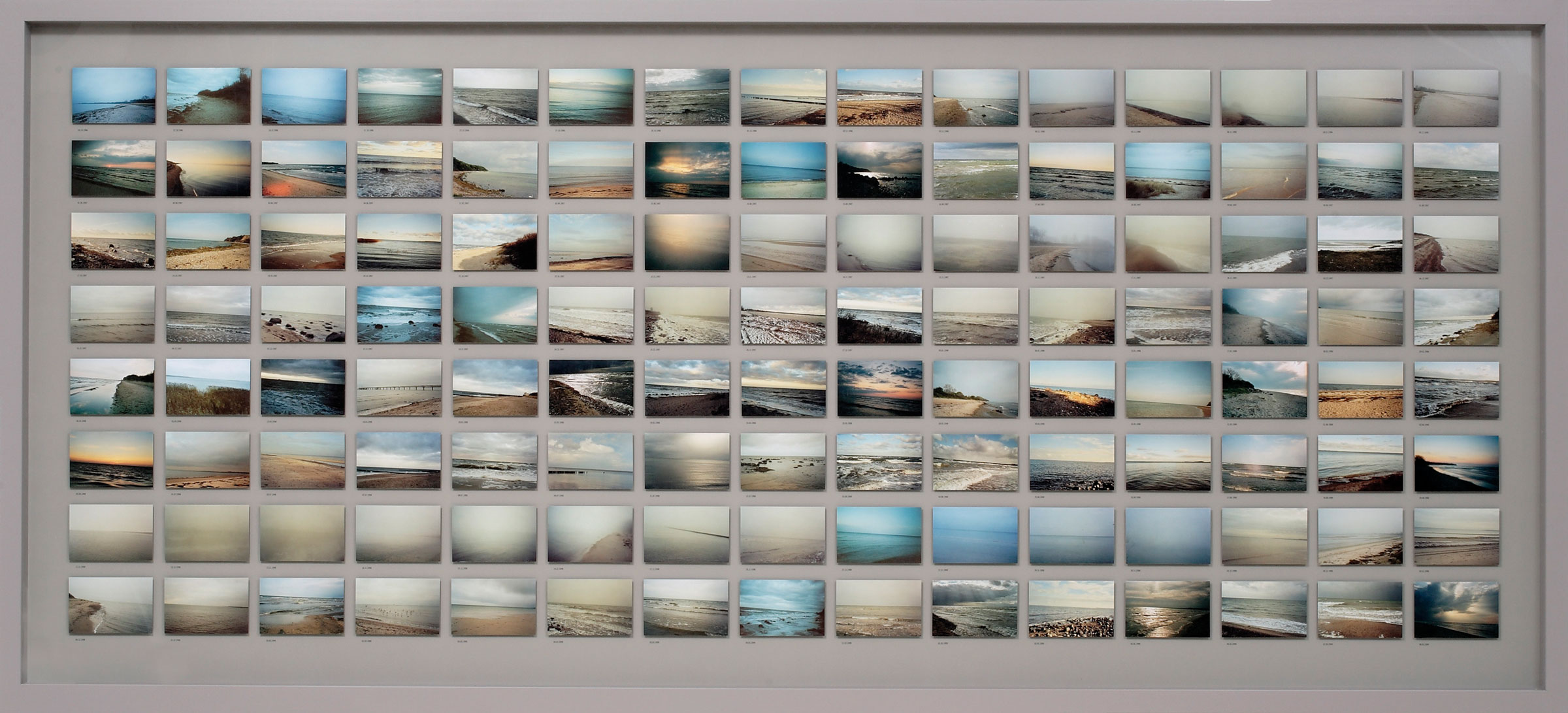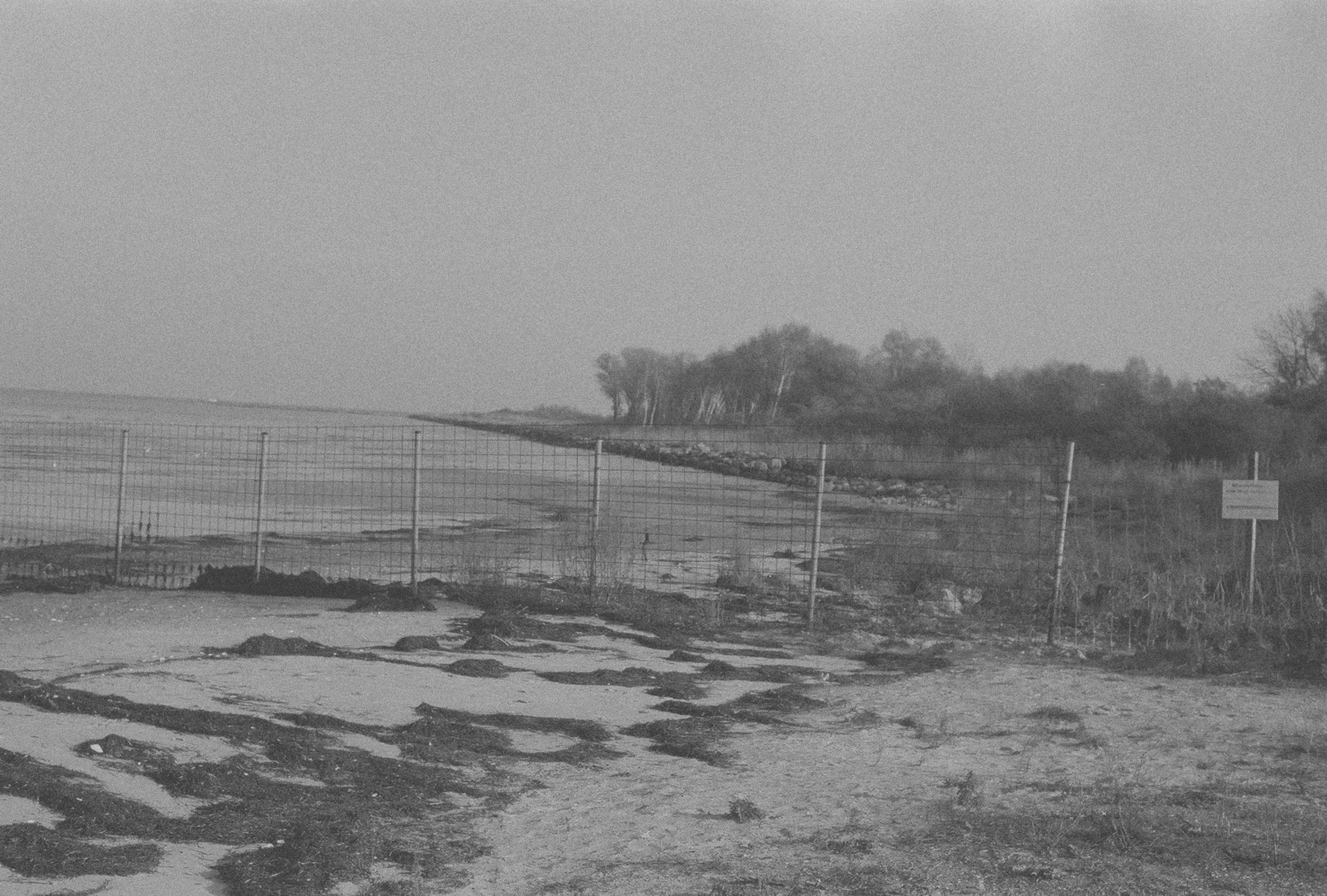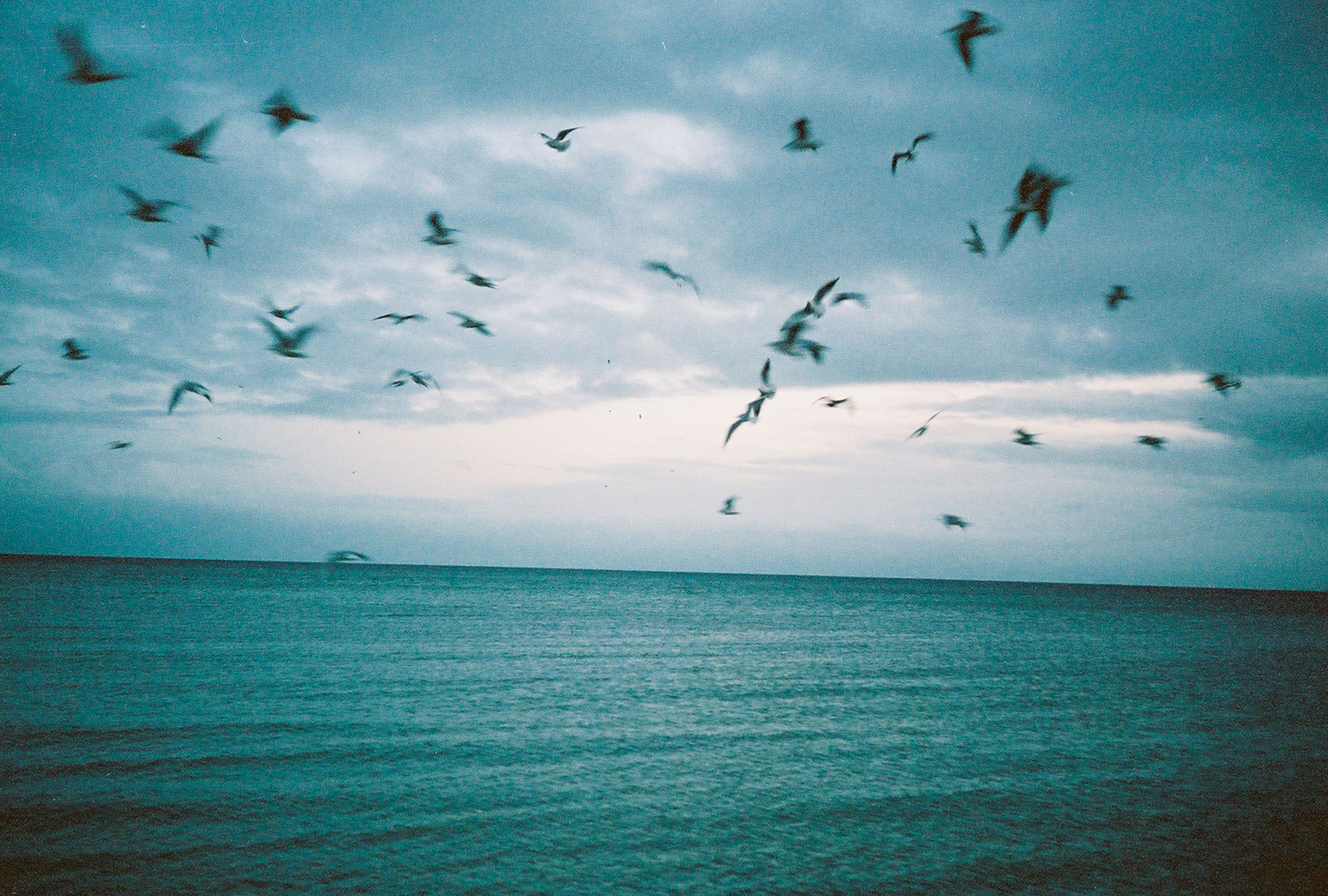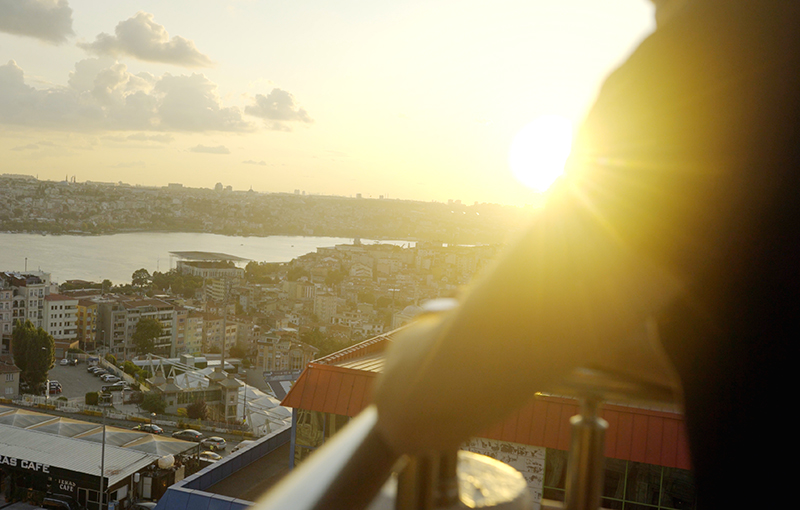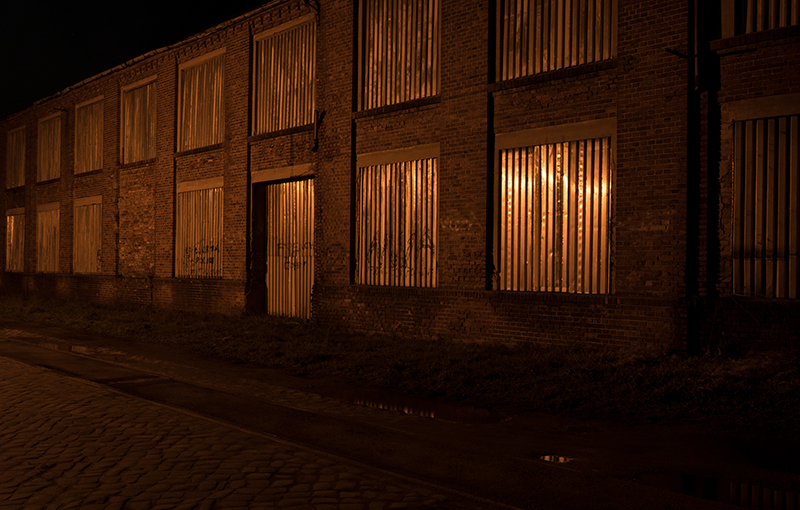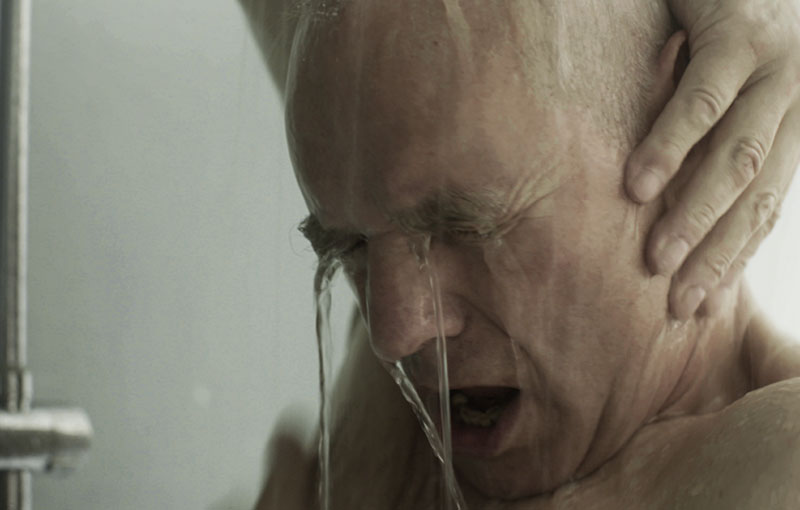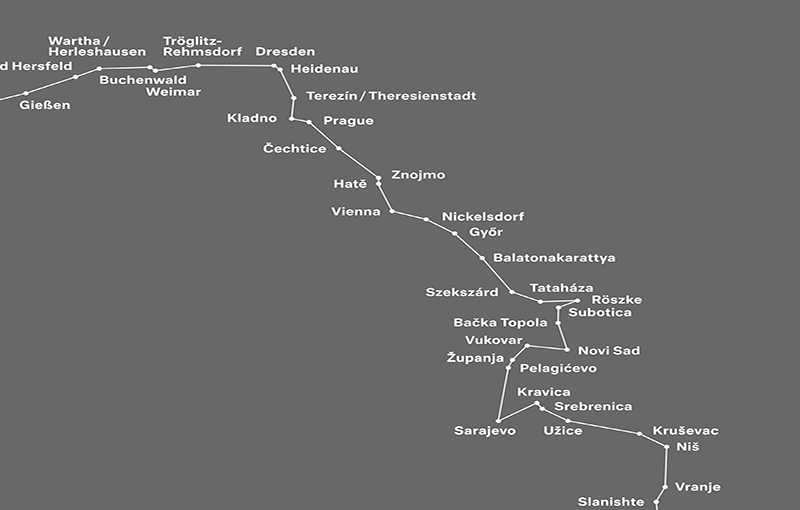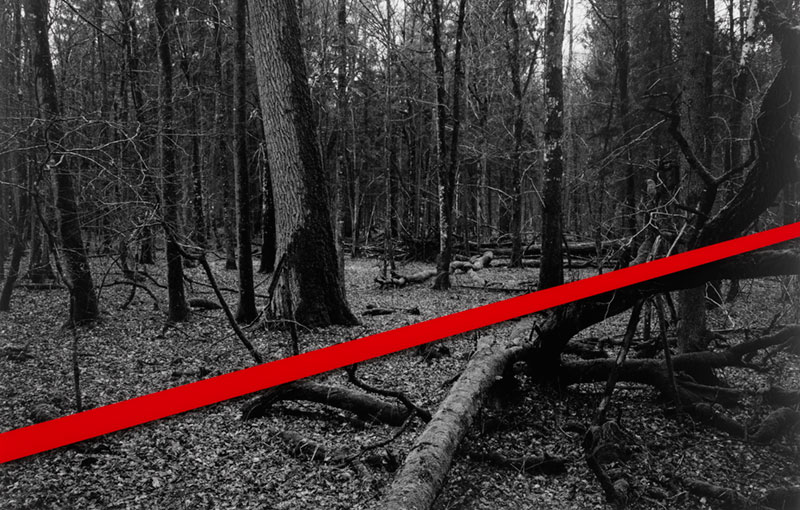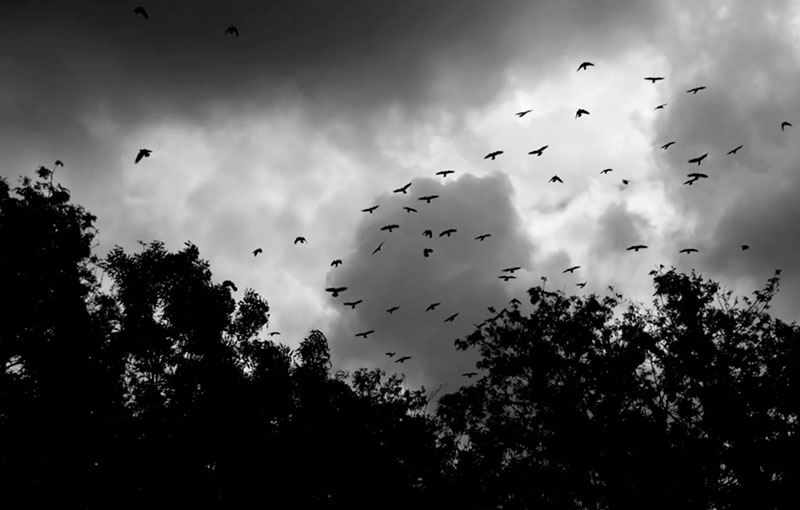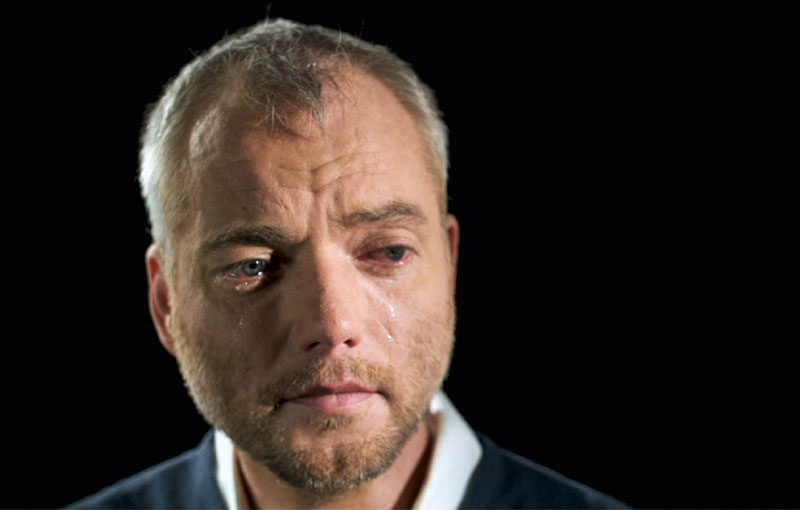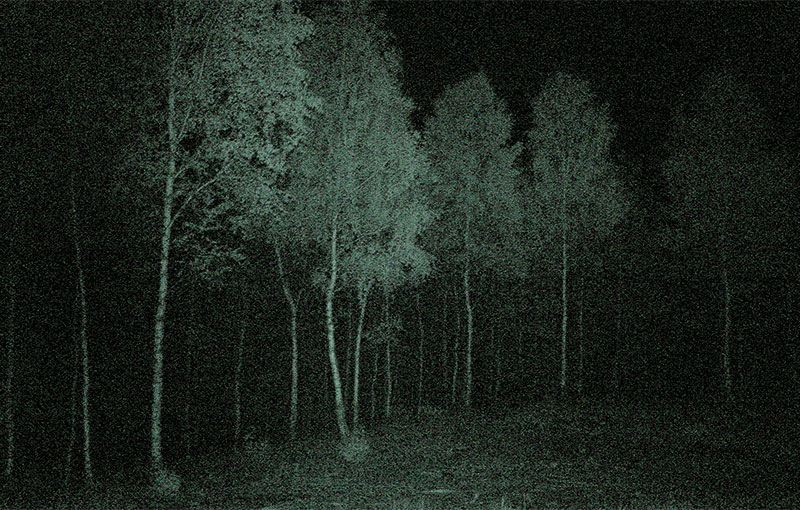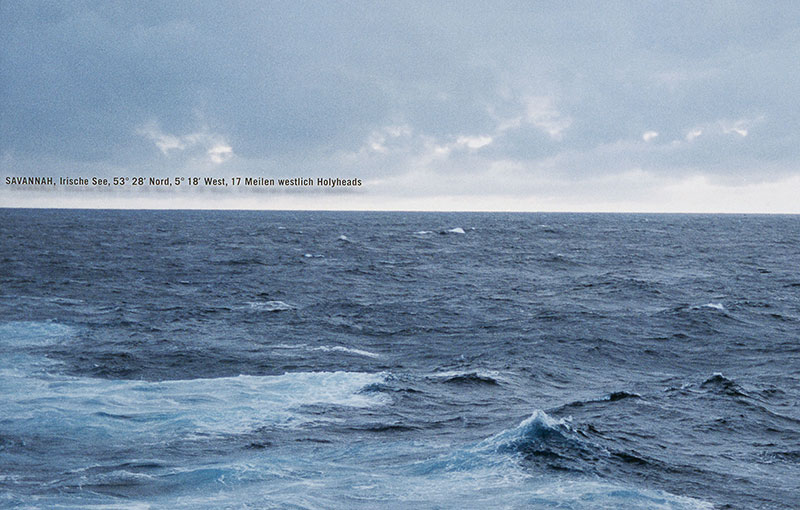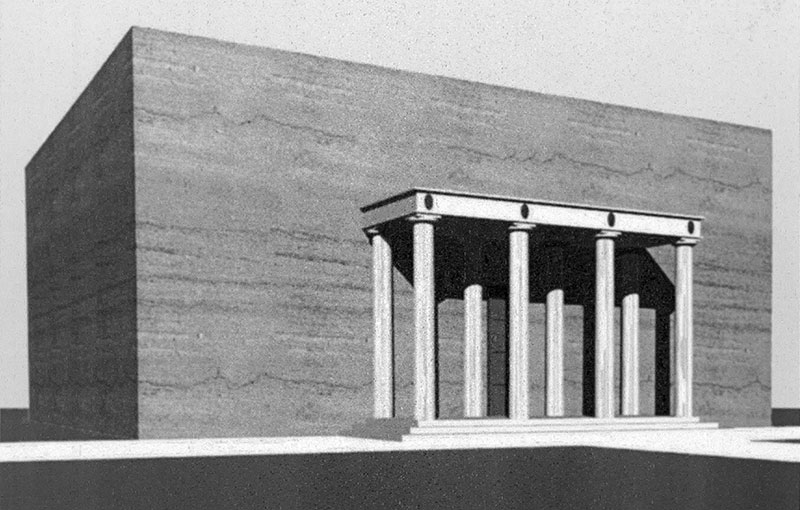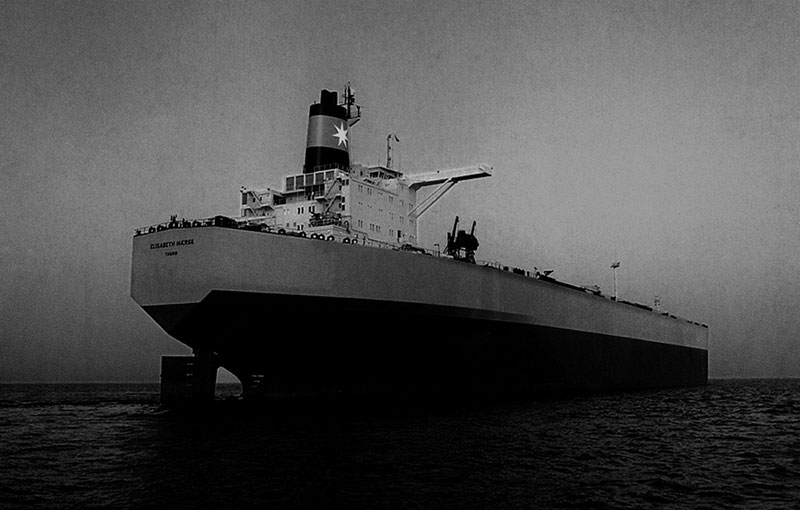2006, 2 showcases, each 130 x 280 cm,
120 b/w photographs, 120 color photographs,
each 10 x 15 cm, text on wall
Am 25. Juli 1976, kurz nach 18 Uhr, zog sich Alfred Kleistner, Mediziner aus Rostock, seinen Neoprenanzug an und ging bei Kühlungsborn in die Ostsee. Er hatte nur einen Kompass, seinen Ausweis, fünf Tafeln Schokolade und Obesin-Tabletten bei sich. Kleistner schwamm 24 Stunden ohne Pause und erreichte nach fast 50 Kilometern die westdeutsche Insel Fehmarn. Die spektakuläre Flucht erregte im Westen großes Aufsehen.
more
more
Kleistner bereitete die Flucht gut vor: er hatte jahrelang trainiert, in den Sommermonaten schwamm er täglich, parallel zum Strand, bis zu 25 Kilometer in der Ostsee. Sogar im Winter trainierte er im Warnowstrom. In Warnemünde nannte man den Einzelgänger die Seerobbe. Es gehörte zu Kleistners Eigenarten, dass er in den Jahren vor seiner Flucht in unregelmäßigen Abständen die Ostsee fotografierte – mal täglich, mal wieder in Abständen von einigen Monaten. Auf der Rückseite versah er diese Amateurbilder mit einer Notiz – meistens Angaben zum Ort oder zur Wetterlage, manchmal auch ein kurzer Satz. Zwei Tage vor seiner Flucht schrieb er: „Ein Leben einzutauschen gegen Zeit, 23. Juli 76.“
Kleistner ging nach seiner Flucht nach Lübeck und fand – ironischerweise – Arbeit bei einem großen Hersteller von Navigationstechnik, deren Geschäftsführer und ab 1987 sogar Eigentümer er wurde. Nach dem Fall der Mauer übersiedelte er einen Teil des Unternehmens in seine alte Heimatstadt Rostock. Im Juni 1999 fand man Kleistners Leiche auf einer Sandbank in der Ostsee, unweit der Stelle, an der er einstmals seine Flucht begann. Kleistner hatte seinen Freitod gut vorbereitet: um seinen Kopf hatte er sich eine Schlinge gelegt, an der Steine befestigt waren. Im Abschiedsbrief nennt er eine Reihe von Gründen für den Suizid, der wichtigste war wohl jedoch, dass er nach Jahren sinkender Umsätze gezwungen war, sein Unternehmen zu verkaufen.
Ab Mitte der 90er Jahre hatte Kleistner wieder begonnen, die Ostsee zu fotografieren. Und wieder bekam jedes Bild eine Notiz – oftmals nur eine Ortsangabe, manchmal aber auch eine kurze, tagebuchartige Momentaufnahme. Kleistner hinterließ damit ein Archiv von 358 Amateurfotografien der Ostsee. Diese Auswahl zeigt 240 Fotografien. less
Kleistner ging nach seiner Flucht nach Lübeck und fand – ironischerweise – Arbeit bei einem großen Hersteller von Navigationstechnik, deren Geschäftsführer und ab 1987 sogar Eigentümer er wurde. Nach dem Fall der Mauer übersiedelte er einen Teil des Unternehmens in seine alte Heimatstadt Rostock. Im Juni 1999 fand man Kleistners Leiche auf einer Sandbank in der Ostsee, unweit der Stelle, an der er einstmals seine Flucht begann. Kleistner hatte seinen Freitod gut vorbereitet: um seinen Kopf hatte er sich eine Schlinge gelegt, an der Steine befestigt waren. Im Abschiedsbrief nennt er eine Reihe von Gründen für den Suizid, der wichtigste war wohl jedoch, dass er nach Jahren sinkender Umsätze gezwungen war, sein Unternehmen zu verkaufen.
Ab Mitte der 90er Jahre hatte Kleistner wieder begonnen, die Ostsee zu fotografieren. Und wieder bekam jedes Bild eine Notiz – oftmals nur eine Ortsangabe, manchmal aber auch eine kurze, tagebuchartige Momentaufnahme. Kleistner hinterließ damit ein Archiv von 358 Amateurfotografien der Ostsee. Diese Auswahl zeigt 240 Fotografien. less
On July 25, 1976, shortly after 6:00 pm, Alfred Kleistner, a medic from Rostock, put on his diving suit and walked into the Baltic Sea near Kühlungsborn. The only things he had with him were a compass, his ID, five bars of chocolate and some appetite suppressant pills. Swimming non-stop for 24 hours, Kleistner covered almost 50 kilometers and reached the West German island of Fehmarn. In the West this spectacular escape caused a sensation.
more
more
Kleistner had prepared his escape well: he trained for years, swimming up to 25 kilometers a day along the Baltic coast in the summer months. Even in winter he trained in the Warnow estuary. In Warnemünde the loner was known as the seal. Among Kleistner’s eccentricities is the fact that in the years before his escape he photographed the Baltic Sea at irregular intervals—sometimes every day, sometimes every few months. He made notes on the back of the prints of his amateur photos—mostly details of the location or the weather, sometimes also a short sentence. Two days before his escape he wrote “to exchange a life for time, July 23rd ’76.”
After his escape Kleistner went to Lübeck and, ironically, found work with a major manufacturer of navigation technology. He became a partner and eventually bought the business in 1987. After the fall of the Berlin Wall he relocated part of the business to his old hometown of Rostock. In June 1999 Kleistner’s body was found on a sandbank in the Baltic Sea, not far from where he had set off on his original escape. Kleistner had prepared his suicide well, placing a noose around his neck with stones tied to the other end. In his farewell letter he gave a number of reasons for his suicide, but the most important was probably that after years of dwindling profits he had been forced to sell his company.
Kleistner had begun to photograph the Baltic Sea again in the mid 1990s. And as before, each picture was annotated—often with just the location, but sometimes with a short journal-like observation. Kleistner left an archive of 358 amateur photographs of the Baltic Sea, 240 of which are shown here. less
After his escape Kleistner went to Lübeck and, ironically, found work with a major manufacturer of navigation technology. He became a partner and eventually bought the business in 1987. After the fall of the Berlin Wall he relocated part of the business to his old hometown of Rostock. In June 1999 Kleistner’s body was found on a sandbank in the Baltic Sea, not far from where he had set off on his original escape. Kleistner had prepared his suicide well, placing a noose around his neck with stones tied to the other end. In his farewell letter he gave a number of reasons for his suicide, but the most important was probably that after years of dwindling profits he had been forced to sell his company.
Kleistner had begun to photograph the Baltic Sea again in the mid 1990s. And as before, each picture was annotated—often with just the location, but sometimes with a short journal-like observation. Kleistner left an archive of 358 amateur photographs of the Baltic Sea, 240 of which are shown here. less

